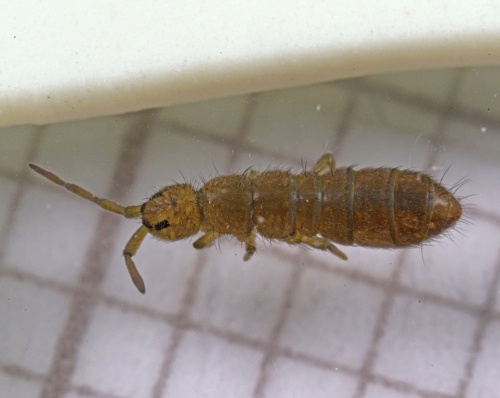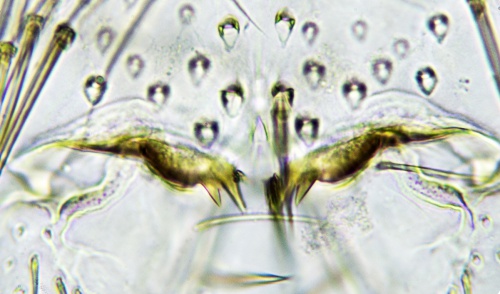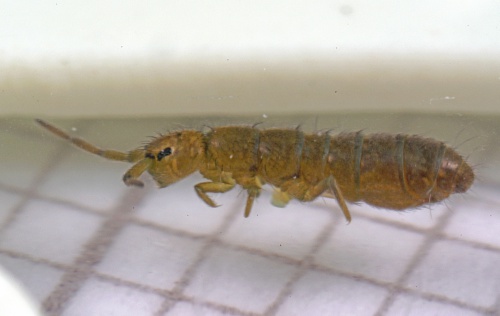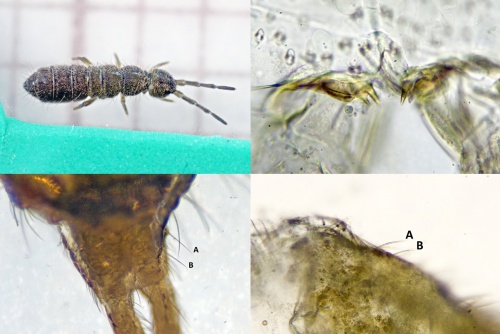Isotoma anglicana
Isotoma caerulea/viridis and Isotoma anglicana are very similar and can only be reliably separated (using slide-mounted specimens) by examining the manubrial 'teeth' and setae on the dens. Isotoma viridis has a single pair of 'teeth' on the thickened apical edge of the manubrium, whereas Isotoma anglicana/caerulea have two pairs of manubrial teeth. I. caerulea has 2 basal dorsal setae on the dens, I. anglicana has 3.
Isotoma caerulea, Isotoma viridis.
Confirmation requires microscopic proof of presence of two pairs of manubrial teeth and correct confirmation of manubrial setae.
Damp places.
All year round.
Widespread and fairly frequent in Britain.
Status in Leicestershire and Rutland not known.
Leicestershire & Rutland Map
Enter a town or village to see local records
MAP KEY:
Yellow squares = NBN records (all known data)
Coloured circles = NatureSpot records: 2020+ | 2015-2019 | pre-2015
UK Map
Species profile
- Species group:
- Springtails & Bristletails
- Kingdom:
- Animalia
- Order:
- Entomobryomorpha
- Family:
- Isotomidae
- Records on NatureSpot:
- 1
- First record:
- 26/01/2019 (Cann, Alan)
- Last record:
- 26/01/2019 (Cann, Alan)
Total records by month
% of records within its species group
10km squares with records
The latest images and records displayed below include those awaiting verification checks so we cannot guarantee that every identification is correct. Once accepted, the record displays a green tick.
In the Latest Records section, click on the header to sort A-Z, and again to sort Z-A. Use the header boxes to filter the list.





